 Carl Graham Fisher, the primary mover and shaker behind the Indianapolis Motor Speedway and both the Lincoln and Dixie Highways, had lots of stories. One in particular is popular among road fans and was originally told by Fisher to partially explain his interest in improving roads and their marking. I’ve heard and read multiple versions of the story and am totally unequipped to distinguish embellishments from additional accurate details. So here’s a version of the story which I believe to be true at its core and possibly in some of the details, too.
Carl Graham Fisher, the primary mover and shaker behind the Indianapolis Motor Speedway and both the Lincoln and Dixie Highways, had lots of stories. One in particular is popular among road fans and was originally told by Fisher to partially explain his interest in improving roads and their marking. I’ve heard and read multiple versions of the story and am totally unequipped to distinguish embellishments from additional accurate details. So here’s a version of the story which I believe to be true at its core and possibly in some of the details, too.
Fisher and some friends had taken a day trip from Indianapolis and were returning in the dark and rain. They came to a point where three roads joined together but none of them could remember which they used earlier in the day. After some inconclusive discussion, they noticed a sign which they thought might indicate which road led back home. It was mounted high on a pole and unreadable in the dark and wet. It was somehow determined that Fisher would climb the pole to read the sign. Some say he climbed the pole once and had to return to the ground for matches. Some say that the first few matches sputtered or were doused by the rain. Some say that it was his very last match that provided a glimpse of the sign’s message. All versions agree on what that message was. Hoping for the name of a town or other landmark, all he saw was “Chew Battle Ax Plug”.
Prior to Tuesday, that funny and revealing story supplied 100% of my knowledge of Battle Ax Plug. On Tuesday I was on my way to Greenville, Ohio, and had left home with enough time in the schedule to try out a new restaurant on the way. I jogged off of my normal path to reach the town of Arcanum. It is a small town in the county I grew up in but I don’t remember much about it and doubt I ever knew all that much. I’d heard good things about the restaurant’s food but knew almost nothing about it beyond that. It was quite a happy surprise to see the big Battle Ax sign that heads this article on the side of the building housing the restaurant. I’ve since learned a little more about the brand.
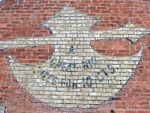 Battle Ax Plug was the very definition of a “loss leader”. Between 1895 and 1898, US tobacco companies were embroiled in the “Plug Wars”. Another aptly named combatant was the Scalp Knife brand from Liggett and Meyers. The American Tobacco Company lost about a million dollars a year with their Battle Ax brand but emerged from the wars with approximately 90% market share. The fading slogan on the sign’s ax head is “A GREAT BIG PIECE FOR 10 CTS.” Those were, back in the day, fighting words.
Battle Ax Plug was the very definition of a “loss leader”. Between 1895 and 1898, US tobacco companies were embroiled in the “Plug Wars”. Another aptly named combatant was the Scalp Knife brand from Liggett and Meyers. The American Tobacco Company lost about a million dollars a year with their Battle Ax brand but emerged from the wars with approximately 90% market share. The fading slogan on the sign’s ax head is “A GREAT BIG PIECE FOR 10 CTS.” Those were, back in the day, fighting words.
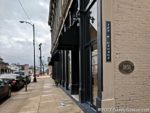
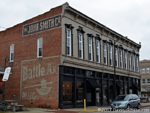 The building behind the sign has its own story and it’s a great one. Built by John Smith in 1851, it housed the family store until 1985. At its closing it was the longest operating family owned business in Ohio. It began as a typical general store offering an assortment of dry goods but eventually meat, produce, and other grocery items were added as were men’s and women’s clothing.
The building behind the sign has its own story and it’s a great one. Built by John Smith in 1851, it housed the family store until 1985. At its closing it was the longest operating family owned business in Ohio. It began as a typical general store offering an assortment of dry goods but eventually meat, produce, and other grocery items were added as were men’s and women’s clothing.


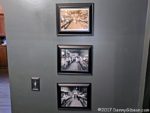 Yes, I certainly got distracted but I did eventually make it to breakfast. One of the places where I’d heard good things about Old Arcana was Ohio Magazine which named their French Toast the best in the state. The magazine quotes co-owner Leslie Handshoe-Suter calling the toast “decadent” and it certainly is. The full name is Bourbon Praline French Toast. Following the meal — and some really good coffee — I chatted with chef and co-owner Jeff Besecker about the menu, the business, and the building. Jeff pointed out the building’s owner, Angie, sitting at one on the tables and I also chatted with her and a table mate who had worked in the store that once filled the entire building. Angie operates Smith’s Merchants which shares the building with the restaurant.
Yes, I certainly got distracted but I did eventually make it to breakfast. One of the places where I’d heard good things about Old Arcana was Ohio Magazine which named their French Toast the best in the state. The magazine quotes co-owner Leslie Handshoe-Suter calling the toast “decadent” and it certainly is. The full name is Bourbon Praline French Toast. Following the meal — and some really good coffee — I chatted with chef and co-owner Jeff Besecker about the menu, the business, and the building. Jeff pointed out the building’s owner, Angie, sitting at one on the tables and I also chatted with her and a table mate who had worked in the store that once filled the entire building. Angie operates Smith’s Merchants which shares the building with the restaurant.
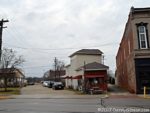 When I first saw the round windows in the Smith Building, they made me think of the round openings I had seen in electric train power stations. When I later learned that the electric powered Dayton & Union interurban once occupied the gravel path in the left half of this picture I’d have almost certainly grasped the power station theory even tighter if I didn’t already know that it wasn’t at all possible. Before I even spoke with Jeff, I’d learned from my waitress that the windows were original from the 1850s and from Jeff and Angie I learned that the building was in constant use as a store during the interurban’s coming and going in the early twentieth century. Headquarters for the Arcanum Historical Society is just out of frame to the left of that last picture. It’s open on some Saturday mornings so I think I’ll come back, learn some more about this town I grew up near, and try another item from that inviting breakfast menu.
When I first saw the round windows in the Smith Building, they made me think of the round openings I had seen in electric train power stations. When I later learned that the electric powered Dayton & Union interurban once occupied the gravel path in the left half of this picture I’d have almost certainly grasped the power station theory even tighter if I didn’t already know that it wasn’t at all possible. Before I even spoke with Jeff, I’d learned from my waitress that the windows were original from the 1850s and from Jeff and Angie I learned that the building was in constant use as a store during the interurban’s coming and going in the early twentieth century. Headquarters for the Arcanum Historical Society is just out of frame to the left of that last picture. It’s open on some Saturday mornings so I think I’ll come back, learn some more about this town I grew up near, and try another item from that inviting breakfast menu.



 A couple of Ohio History Connection sites are reopening this weekend after pretty big makeovers. On Saturday I visited Ohio Village which moved from the 1860s to the 1890s since I last saw it. I’ll reach the Hayes Presidential Center, which reopens with new displays after a major renovation. Saturday’s journal has been posted.
A couple of Ohio History Connection sites are reopening this weekend after pretty big makeovers. On Saturday I visited Ohio Village which moved from the 1860s to the 1890s since I last saw it. I’ll reach the Hayes Presidential Center, which reopens with new displays after a major renovation. Saturday’s journal has been posted.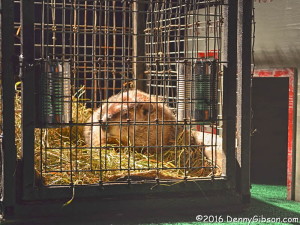




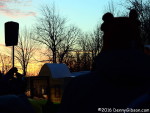
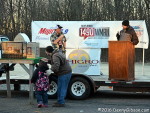
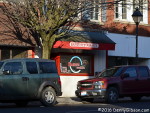
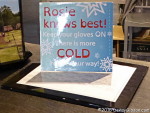
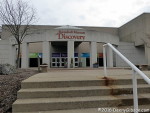
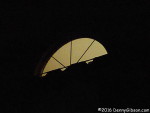
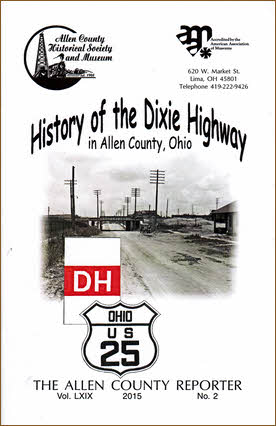 I could have called this a pamphlet review. That’s technically what it is. Or, since one definition of pamphlet is “a small book”, I could have called this a small book review. I decided to leave the title be but, in line with the publication’s size, I’ll try to be brief and do a small small book review.
I could have called this a pamphlet review. That’s technically what it is. Or, since one definition of pamphlet is “a small book”, I could have called this a small book review. I decided to leave the title be but, in line with the publication’s size, I’ll try to be brief and do a small small book review.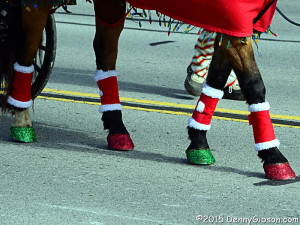
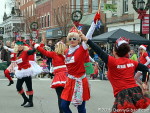
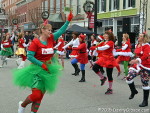
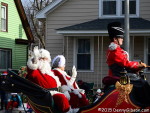
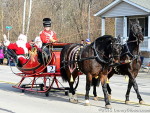
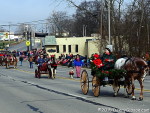
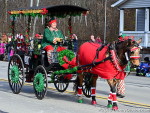
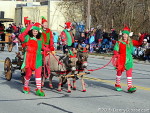
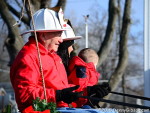
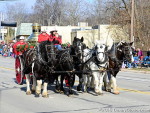
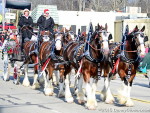
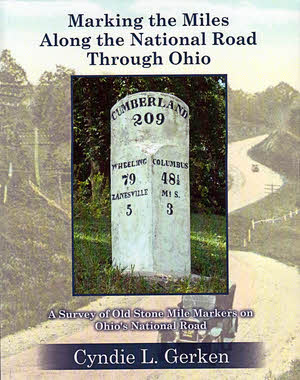 That’s a pretty long book title. There’s a subtitle, too, which makes the whole thing Marking the Miles Along the National Road Through Ohio: A Survey of Old Stone Mile Markers on Ohio’s National Road. It’s long because it, just like the book it identifies, is accurate and precise. The book accurately and precisely locates the 175 mile markers originally set, as accurately and precisely as early nineteenth century technology and local politicians would allow, beside the Ohio portion of the very first federal highway. With all that accuracy and precision you might think this volume would be completely dry and boring but that’s not the case. Stories about the road, the countryside, and even the markers themselves lighten and soften things considerably. Color photos and maps make the book attractive.
That’s a pretty long book title. There’s a subtitle, too, which makes the whole thing Marking the Miles Along the National Road Through Ohio: A Survey of Old Stone Mile Markers on Ohio’s National Road. It’s long because it, just like the book it identifies, is accurate and precise. The book accurately and precisely locates the 175 mile markers originally set, as accurately and precisely as early nineteenth century technology and local politicians would allow, beside the Ohio portion of the very first federal highway. With all that accuracy and precision you might think this volume would be completely dry and boring but that’s not the case. Stories about the road, the countryside, and even the markers themselves lighten and soften things considerably. Color photos and maps make the book attractive.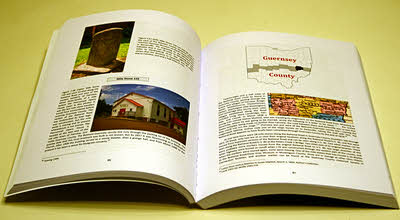 Seven of the ten Ohio counties through which the National Road passed are covered in individual chapters following the introduction. No markers were ever placed in the three westernmost counties on the route as federal funding ended near Springfield in Clark County. Each of these chapters begins with an overview of the county that includes a summary of how many original markers there were, how many remain at their original location, how many exist elsewhere, and how many are lost. Each marker is then addressed individually. With few exceptions there is at least one picture. If a given marker survives, a current photo is included and one or more historical photos are usually presented regardless of whether or not the marker is still around. Understandably, markings on many of the older stones are not exactly legible. Not to worry. Appendix B contains crisp drawings of the inscription of every marker. Markers can often be seen, accidentally perhaps, in old postcards and other photos and many of these appear in the book. Each marker’s history is given and stories about the marker or the area around it frequently add a little fun and background. Placed among the individual marker descriptions are sections of US Geological Survey 7.5 minute topographical maps showing the location of the markers three at a time. Other National Road related landmarks are often shown on the maps as well.
Seven of the ten Ohio counties through which the National Road passed are covered in individual chapters following the introduction. No markers were ever placed in the three westernmost counties on the route as federal funding ended near Springfield in Clark County. Each of these chapters begins with an overview of the county that includes a summary of how many original markers there were, how many remain at their original location, how many exist elsewhere, and how many are lost. Each marker is then addressed individually. With few exceptions there is at least one picture. If a given marker survives, a current photo is included and one or more historical photos are usually presented regardless of whether or not the marker is still around. Understandably, markings on many of the older stones are not exactly legible. Not to worry. Appendix B contains crisp drawings of the inscription of every marker. Markers can often be seen, accidentally perhaps, in old postcards and other photos and many of these appear in the book. Each marker’s history is given and stories about the marker or the area around it frequently add a little fun and background. Placed among the individual marker descriptions are sections of US Geological Survey 7.5 minute topographical maps showing the location of the markers three at a time. Other National Road related landmarks are often shown on the maps as well. Bringing all of this information together is clearly a major accomplishment but Gerken, a past ONRA president herself, says the information is only a portion of what she has collected on the National Road in Ohio. A well deserved breather follows wrapping up Marking the Miles Along the National Road Through Ohio. Nothing is currently scheduled or promised but the future could see a Gerken penned treatise on bridges or taverns or toll houses or something else. I certainly hope so. I like accuracy and precision and I also like anecdotes and insight. Marking the Miles… provides a pretty good mix.
Bringing all of this information together is clearly a major accomplishment but Gerken, a past ONRA president herself, says the information is only a portion of what she has collected on the National Road in Ohio. A well deserved breather follows wrapping up Marking the Miles Along the National Road Through Ohio. Nothing is currently scheduled or promised but the future could see a Gerken penned treatise on bridges or taverns or toll houses or something else. I certainly hope so. I like accuracy and precision and I also like anecdotes and insight. Marking the Miles… provides a pretty good mix. We fought a war to get this country going then gave every land owning white male above the age of twenty-one the right to vote. A little more than four score years later, we fought a war with ourselves that cleared the way for non-whites to vote. Several decades of loud, disruptive, and sometimes dangerous behavior brought the granting of that same right to non-males a half-century later and another half century saw the voting age lowered to eighteen after a decade or so of protests and demonstrations.
We fought a war to get this country going then gave every land owning white male above the age of twenty-one the right to vote. A little more than four score years later, we fought a war with ourselves that cleared the way for non-whites to vote. Several decades of loud, disruptive, and sometimes dangerous behavior brought the granting of that same right to non-males a half-century later and another half century saw the voting age lowered to eighteen after a decade or so of protests and demonstrations.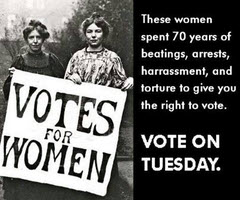 Of course, putting something in a constitution does not automatically make it a practice throughout the land and I am painfully aware that resistance followed each of those changes and that efforts to make voting extremely difficult for “the other side” are ongoing today. I don’t want to ignore partisan obstructions and system flaws but neither do I want to get hung up on them. I meant my first paragraph to be a reminder that a hell of a lot of effort, property, and lives have gone into providing an opportunity to vote to a hell of a lot of people. Far too many of those opportunities go unused.
Of course, putting something in a constitution does not automatically make it a practice throughout the land and I am painfully aware that resistance followed each of those changes and that efforts to make voting extremely difficult for “the other side” are ongoing today. I don’t want to ignore partisan obstructions and system flaws but neither do I want to get hung up on them. I meant my first paragraph to be a reminder that a hell of a lot of effort, property, and lives have gone into providing an opportunity to vote to a hell of a lot of people. Far too many of those opportunities go unused. In the title I claim to not care how anyone votes. That’s not entirely true, of course. I have my favorite candidates and issues. I’ll be disappointed in anyone who votes differently than I do but not nearly as disappointed as I’ll be in anyone who doesn’t vote at all. I’m reminded of parents working on getting their kids to clean their plates with lines like, “There are hungry children in China who would love to have your green beans.” I’m not sure what the demand for leftover beans is in Beijing these days but I’m pretty sure some folks there would like to have our access to ballots and voting booths.
In the title I claim to not care how anyone votes. That’s not entirely true, of course. I have my favorite candidates and issues. I’ll be disappointed in anyone who votes differently than I do but not nearly as disappointed as I’ll be in anyone who doesn’t vote at all. I’m reminded of parents working on getting their kids to clean their plates with lines like, “There are hungry children in China who would love to have your green beans.” I’m not sure what the demand for leftover beans is in Beijing these days but I’m pretty sure some folks there would like to have our access to ballots and voting booths. 3 is the number assigned to the ballot issue on the legalization of marijuana in Ohio.
3 is the number assigned to the ballot issue on the legalization of marijuana in Ohio.